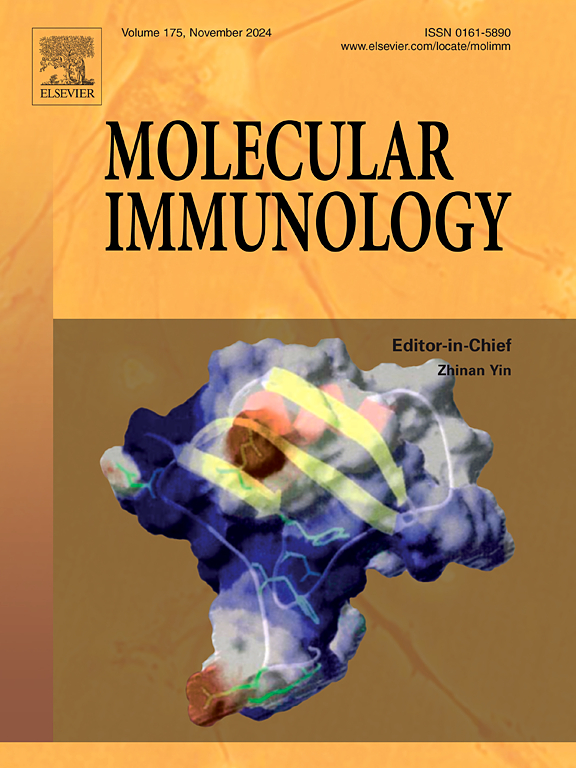Phenotypes of antigen-induced responses in guinea pigs: Beyond the asthma model
IF 3.2
3区 医学
Q2 BIOCHEMISTRY & MOLECULAR BIOLOGY
引用次数: 0
Abstract
Asthma is a heterogeneous and variable disease. In an allergic asthma model using guinea pigs (GPs), we identified three distinct phenotypes: those always showing an obstructive response (R), those never responding (NR), and those sometimes responding (VR). We aimed to assess and compare the functional and immunological characteristics of these groups. GPs were sensitized and challenged with ovalbumin (OVA) every 10 days in a plethysmographic chamber to measure the maximum obstructive response. The control group was sensitized and challenged with saline. Control and NR GPs never duplicated baseline obstruction values. At least three antigenic challenges were needed to identify each phenotype. None of the groups showed late responses. Analysis of at least six antigenic challenges in 125 GPs revealed that 48 % were R, 20 % NR, 29 % VR, and 8 % died from anaphylactic shock. R GPs did not develop antigenic tolerance. During the third or twelfth challenges, we evaluated antigen-induced airway reactivity to histamine: R GPs consistently showed hyperreactivity, NR showed hyperreactivity only on the third challenge, while VR and control groups never showed hyperreactivity. Serum levels of anti-OVA IgE and IgG1 were elevated in all groups compared to controls. IL-4 levels in the lungs and eosinophils counts in bronchoalveolar lavage fluid (BALF) of R and VR were higher than to controls and NR. The number of mast cells in the airway wall also increased in R and VR compared to controls. IFN-γ levels were similar across all groups on the third challenge but increased significantly in NR on the twelfth challenge compared to the other groups. Neutrophil counts in BALF increased in R and VR, and in NR but only at the twelfth challenge compared to controls. Our findings suggest that R and VR guinea pigs serve as valid models for asthma, with VR representing a distinct phenotype characterized by variability and lack of hyperreactivity. Conversely, NR guinea pigs, despite their high IgE and anti-OVA IgG1 levels and hyperresponsiveness at the third challenge, do not align with typical asthma characteristics.
求助全文
约1分钟内获得全文
求助全文
来源期刊

Molecular immunology
医学-免疫学
CiteScore
6.90
自引率
2.80%
发文量
324
审稿时长
50 days
期刊介绍:
Molecular Immunology publishes original articles, reviews and commentaries on all areas of immunology, with a particular focus on description of cellular, biochemical or genetic mechanisms underlying immunological phenomena. Studies on all model organisms, from invertebrates to humans, are suitable. Examples include, but are not restricted to:
Infection, autoimmunity, transplantation, immunodeficiencies, inflammation and tumor immunology
Mechanisms of induction, regulation and termination of innate and adaptive immunity
Intercellular communication, cooperation and regulation
Intracellular mechanisms of immunity (endocytosis, protein trafficking, pathogen recognition, antigen presentation, etc)
Mechanisms of action of the cells and molecules of the immune system
Structural analysis
Development of the immune system
Comparative immunology and evolution of the immune system
"Omics" studies and bioinformatics
Vaccines, biotechnology and therapeutic manipulation of the immune system (therapeutic antibodies, cytokines, cellular therapies, etc)
Technical developments.
 求助内容:
求助内容: 应助结果提醒方式:
应助结果提醒方式:


